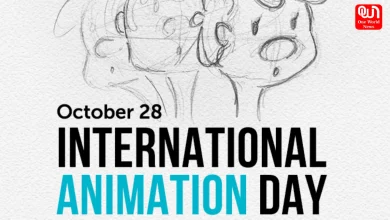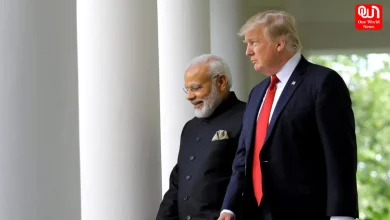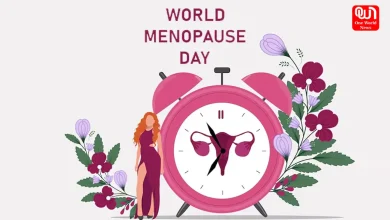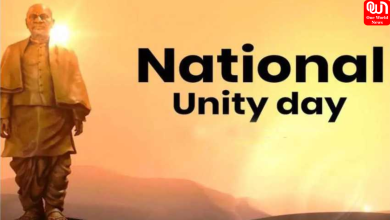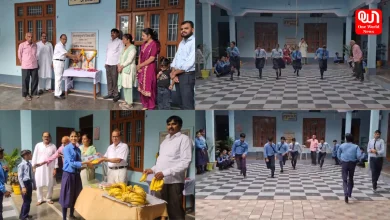Mandana Art
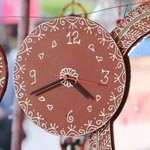
If you happen to walk past a stall at an exhibition and get hold of a beautiful reflection with an equally beautiful outline, the image you see is an ancient-cum-modern art of the rural West India.
The world already knows a lot about the famous Madhubani paintings but is still to catch a glimpse of Rajasthan’s Mandana art.
Showing a camel-shaped wall-clock in Mandana art, Salma Shidhar, an artist from Bikaner says, “The modern wall-clocks and nameplates are drawn on paper machie board with PoP fevicol for outlining.” Salma, with her father and other employees, organises exhibitions all over the country to promote their regional art.

Mandana paintings are basically wall paintings of Rajasthan. The word Mandana is derived from the Sanskrit word ‘Mandan’ which means ‘to invent’. So, these modern Mandana artists are trying their level best to keep the tradition alive by inventing new artistic techniques. For this, the artists are trying to give it a modern look by using glass, metal, wood, linen, cotton, ceramic, gold and terracotta materials.
Initially, it was drawn to protect the house, welcome Gods and as a mark of celebrations on festive occasions. Village women in the Sawai Madhopur area of Rajasthan possess skill for developing these designs with perfect symmetry and accuracy.The paintings on the mud houses are done only in two colours, red or mud brown (in the background) and white for the drawings. The mud houses are made up of clay mixed with dung and lime or chalk powder to draw the theme.
Rangoli also forms part of this Mandana art. The Rajasthani version of the Gujarati Rangoli or Bengali alpana, Mandana uses simple geometric forms like triangles, squares and circles to decorate houses.

Mandana includes unique execution of simple lines. Mandana paintings can be divided into two types called Vallhari pradhan & Aakriti pradhan. Vallhari Mandanas consists of floral patterns & nature living objects like- birds and animals. Aakriti Mandanas depict geometric forms expressing the five elements of Prakriti (nature) like- triangle (fire), square (earth), circle (water), dot (ether) crescent-curve line (air) and non-living objects. Earlier, traditional Mandanas used to be highly symbolic imagery with compositions of aesthetic patterns, motives in uneven flowing lines and influenced by Vedic beliefs, Tantrik and other ritualistic signs, etc. Today, such Mandanas are nowhere to be found. This art is closely related to the science of vaastu, beauty, holy charms and spiritualism, etc. It is very important to go right into the depth of this art and its symbolism,in order to understand its soul.
This form of art is practiced by the Meena tribal community. No formal training is acquired for this but it is simply passed from one generation to the other. For them, it is an expression of joy. They are highly skilled and well-educated in terms of their long and rich experience.
This art has gradually developed from mud houses to markets. Wall clocks, nameplates, wall-hangings, mirrors, pen-stands are few such examples.The market expanded from villages to towns and along with it, the drawing patterns and techniques have changed.

Since more and more pucca (concrete) houses have been constructed in place of traditional mud houses, this art form is on the verge of extinction as it’s not possible on cement walls. So, people are trying to expose art and culture outside Rajasthan. And for this, the artists are organising exhibitions all over the country.
However, there are few hotels and buildings in Rajasthan where Mandana painting can be spotted on their mud walls. For example, each cottage and room at ‘Desert Resort’ is furnished in a distinctive style. The exterior are decorated with traditional lime-paste ‘Mandana’ on rice flour patterns which are almost re-done daily by women from the village. The walls are first covered with a mixture of red clay and cow dung, and then painted with white chalk using brushes made from local bamboo.

The art reflects the traditional harmony between man and nature in the region. The themes of Mandana are mainly variety of birds, animals and plants, and other exquisite decorative designs which are highlighted with dots and dashes. Amongst all these forms, their forte is moradi (peacock) painted in a variety of magnificent styles and shapes mostly on façade. In Mandana paintings, the Meena women record their past and present experiences; thus we see the drawings of such animals, birds and objects that no more exist in their present surroundings. Occasional images of a tractor, bus, motorcycle, or a bullock-cart also features in their art which shows ever-growing vitality of their imagination and the desire of inculcating the elements of contemporary happenings.
Have a news story, an interesting write-up or simply a suggestion? Write to us at info@oneworldnews.in

